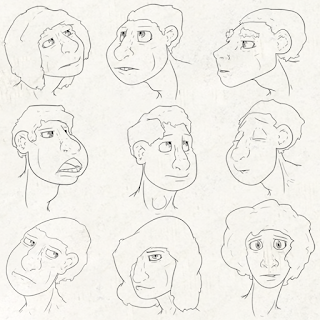12 Principles of Animation -
TIMING
Expertise in timing comes best with experience and personal experimentation, using the trial and error method in refining technique. The basics are: more drawings between poses slow and smooth the action. Fewer drawings make the action faster and crisper. A variety of slow and fast timing within a scene adds texture and interest to the movement. Most animation is done on twos (one drawing photographed on two frames of film) or on ones (one drawing photographed on each frame of film). Twos are used most of the time, and ones are used during camera moves such as trucks, pans and occasionally for subtle and quick dialogue animation. Also, there is timing in the acting of a character to establish mood, emotion, and reaction to another character or to a situation. Studying movement of actors and performers on stage and in films is useful when animating human or animal characters. This frame by frame examination of film footage will aid you in understanding timing for animation. This is a great way to learn from the others.
http://www.frankanollie.com/PhysicalAnimation.html
Program - Maya 2010 http://www.autodesk.com/products/maya/overview
Rig - Goon Rig http://www.kennyroy.com/public/How-to-Cheat-in-Maya-2013.cfm
Animator's Bibles:
Character Animation Crash Course -
http://www.amazon.com/Character-Animation-Crash-Course-Goldberg/dp/1879505975
Illusion of Life -
http://www.amazon.com/The-Illusion-Life-Disney-Animation/dp/0786860707
Animator's Survival Kit -
http://www.amazon.com/The-Animators-Survival-Richard-Williams/dp/0571202284
http://www.caseyturbos.com
Twitter: https://twitter.com/caseyturbos
Facebook: https://www.facebook.com/caseyturbos
Twitch: Twitch: http://www.twitch.tv/caseyturbos

